Related Research Articles

Ethology is the scientific study of animal behaviour, usually with a focus on behaviour under natural conditions, and viewing behaviour as an evolutionarily adaptive trait. Behaviourism as a term also describes the scientific and objective study of animal behaviour, usually referring to measured responses to stimuli or to trained behavioural responses in a laboratory context, without a particular emphasis on evolutionary adaptivity. Throughout history, different naturalists have studied aspects of animal behaviour. Ethology has its scientific roots in the work of Charles Darwin and of American and German ornithologists of the late 19th and early 20th century, including Charles O. Whitman, Oskar Heinroth, and Wallace Craig. The modern discipline of ethology is generally considered to have begun during the 1930s with the work of Dutch biologist Nikolaas Tinbergen and Austrian biologists Konrad Lorenz and Karl von Frisch, the three recipients of the 1973 Nobel Prize in Physiology or Medicine. Ethology combines laboratory and field science, with a strong relation to some other disciplines such as neuroanatomy, ecology, and evolutionary biology. Ethologists typically show interest in a behavioural process rather than in a particular animal group, and often study one type of behaviour, such as aggression, in a number of unrelated species.
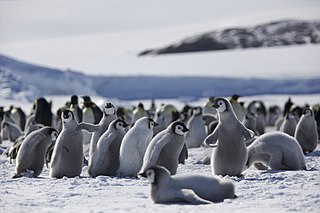
Behavioral ecology, also spelled behavioural ecology, is the study of the evolutionary basis for animal behavior due to ecological pressures. Behavioral ecology emerged from ethology after Niko Tinbergen outlined four questions to address when studying animal behaviors: What are the proximate causes, ontogeny, survival value, and phylogeny of a behavior?

Foraging is searching for wild food resources. It affects an animal's fitness because it plays an important role in an animal's ability to survive and reproduce. Foraging theory is a branch of behavioral ecology that studies the foraging behavior of animals in response to the environment where the animal lives.

In ethology, territory is the sociographical area that an animal consistently defends against conspecific competition using agonistic behaviors or real physical aggression. Animals that actively defend territories in this way are referred to as being territorial or displaying territorialism.

The gray mouse lemur, grey mouse lemur or lesser mouse lemur, is a small lemur, a type of strepsirrhine primate, found only on the island of Madagascar. Weighing 58 to 67 grams, it is the largest of the mouse lemurs, a group that includes the smallest primates in the world. The species is named for its mouse-like size and coloration and is known locally as tsidy, koitsiky, titilivaha, pondiky, and vakiandry. The gray mouse lemur and all other mouse lemurs are considered cryptic species, as they are nearly indistinguishable from each other by appearance. For this reason, the gray mouse lemur was considered the only mouse lemur species for decades until more recent studies began to distinguish between the species.

A herd is a social group of certain animals of the same species, either wild or domestic. The form of collective animal behavior associated with this is called herding. These animals are known as gregarious animals.

In biology, a dominance hierarchy is a type of social hierarchy that arises when members of animal social groups interact, creating a ranking system. A dominant higher-ranking individual is sometimes called an alpha, and the submissive lower-ranking individual a beta. Different types of interactions can result in dominance depending on the species, including ritualized displays of aggression or direct physical violence. In social living groups, members are likely to compete for access to limited resources and mating opportunities. Rather than fighting each time they meet, relative rank is established between individuals of the same sex, with higher-ranking individuals often gaining more access to resources and mates. Based on repetitive interactions, a social order is created that is subject to change each time a dominant animal is challenged by a subordinate one.

The ruffed lemurs of the genus Varecia are strepsirrhine primates and the largest extant lemurs within the family Lemuridae. Like all living lemurs, they are found only on the island of Madagascar. Formerly considered to be a monotypic genus, two species are now recognized: the black-and-white ruffed lemur, with its three subspecies, and the red ruffed lemur.

A pack hunter or social predator is a predatory animal which hunts its prey by working together with other members of its species. Normally animals hunting in this way are closely related, and with the exceptions of chimpanzees where only males normally hunt, all individuals in a family group contribute to hunting. When hunting cooperation is across two or more species, the broader term cooperative hunting is commonly used.

Sociality is the degree to which individuals in an animal population tend to associate in social groups (gregariousness) and form cooperative societies.
Cooperative breeding is a social system characterized by alloparental care: offspring receive care not only from their parents, but also from additional group members, often called helpers. Cooperative breeding encompasses a wide variety of group structures, from a breeding pair with helpers that are offspring from a previous season, to groups with multiple breeding males and females (polygynandry) and helpers that are the adult offspring of some but not all of the breeders in the group, to groups in which helpers sometimes achieve co-breeding status by producing their own offspring as part of the group's brood. Cooperative breeding occurs across taxonomic groups including birds, mammals, fish, and insects.
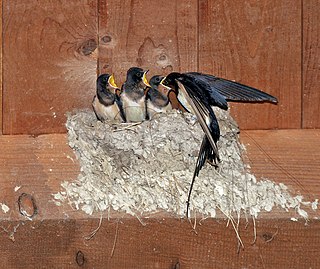
Parental care is a behavioural and evolutionary strategy adopted by some animals, involving a parental investment being made to the evolutionary fitness of offspring. Patterns of parental care are widespread and highly diverse across the animal kingdom. There is great variation in different animal groups in terms of how parents care for offspring, and the amount of resources invested by parents. For example, there may be considerable variation in the amount of care invested by each sex, where females may invest more in some species, males invest more in others, or investment may be shared equally. Numerous hypotheses have been proposed to describe this variation and patterns in parental care that exist between the sexes, as well as among species.
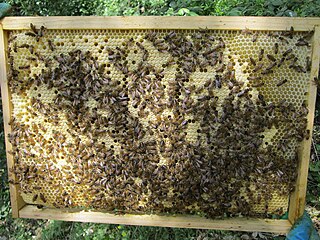
Eusociality, the highest level of organization of sociality, is defined by the following characteristics: cooperative brood care, overlapping generations within a colony of adults, and a division of labor into reproductive and non-reproductive groups. The division of labor creates specialized behavioral groups within an animal society which are sometimes referred to as 'castes'. Eusociality is distinguished from all other social systems because individuals of at least one caste usually lose the ability to perform at least one behavior characteristic of individuals in another caste. Eusocial colonies can be viewed as superorganisms.
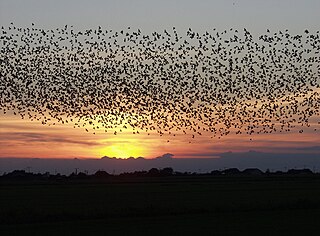
Collective animal behavior is a form of social behavior involving the coordinated behavior of large groups of similar animals as well as emergent properties of these groups. This can include the costs and benefits of group membership, the transfer of information, decision-making process, locomotion and synchronization of the group. Studying the principles of collective animal behavior has relevance to human engineering problems through the philosophy of biomimetics. For instance, determining the rules by which an individual animal navigates relative to its neighbors in a group can lead to advances in the deployment and control of groups of swimming or flying micro-robots such as UAVs.

The black-and-white ruffed lemur is an endangered species of ruffed lemur, one of two which are endemic to the island of Madagascar. Despite having a larger range than the red ruffed lemur, it has a much smaller population that is spread out, living in lower population densities and reproductively isolated. It also has less coverage and protection in large national parks than the red ruffed lemur. Three subspecies of black-and-white ruffed lemur have been recognized since the red ruffed lemur was elevated to species status in 2001.
Vigilance, in the field of behavioural ecology, refers to an animal's examination of its surroundings in order to heighten awareness of predator presence. Vigilance is an important behaviour during foraging as animals must often venture away from the safety of shelter to find food. However being vigilant comes at the expense of time spent feeding so there is a trade-off between the two. The length of time animals devote to vigilance is dependent on many factors including predation risk and hunger.

Megalopta genalis is a species of the family Halictidae, otherwise known as the sweat bees. The bee is native to Central and South America. Its eyes have anatomical adaptations that make them 27 times more sensitive to light than diurnal bees, giving it the ability to be nocturnal. However, its eyes are not completely different from other diurnal bees, but are still apposition compound eyes. The difference therefore lies purely in adaptations to become nocturnal, increasing the success of foraging and minimizing the danger of doing so from predation. This species has served as a model organism in studies of social behavior and night vision in bees.

In behavioral ecology, polyandry is a class of mating system where one female mates with several males in a breeding season. Polyandry is often compared to the polygyny system based on the cost and benefits incurred by members of each sex. Polygyny is where one male mates with several females in a breeding season . A common example of polyandrous mating can be found in the field cricket of the invertebrate order Orthoptera. Polyandrous behavior is also prominent in many other insect species, including the red flour beetle and the species of spider Stegodyphus lineatus. Polyandry also occurs in some primates such as marmosets, mammal groups, the marsupial genus' Antechinus and bandicoots, around 1% of all bird species, such as jacanas and dunnocks, insects such as honeybees, and fish such as pipefish.

Primate sociality is an area of primatology that aims to study the interactions between three main elements of a primate social network: the social organisation, the social structure and the mating system. The intersection of these three structures describe the socially complex behaviours and relationships occurring among adult males and females of a particular species. Cohesion and stability of groups are maintained through a confluence of factors, including: kinship, willingness to cooperate, frequency of agonistic behaviour, or varying intensities of dominance structures.
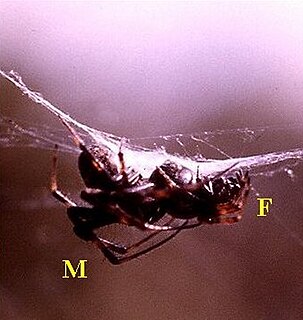
Metepeira incrassata, also known as the colonial orb-weaving spider, belongs to the spider family Araneidae and genus Metepeira. They are most famous for their social organization and group living behavior. They are generally found in tropical rainforest and agricultural sites in Mexico, and their habitats tend to be highly productive. Their group sizes are relatively larger than other colonial spiders, typically ranging from hundreds to thousands of individuals. 99% of the females are observed to participate in colonial living, generally with at least two other individuals. Because most M. incrassata females are communal, the colonies are often dominated by larger males. There is minimal sexual dimorphism observed in M. incrassata. Unlike other orb-weaver spiders, M. incrassata builds a colonial web by connecting each spider's individual webs together through semi-permanent framelines. These colonial webs of M. incrassata are prone to invasion by kleptoparasitic and araneophagic spiders such as the Theridiidae family. The reproductive cycle of M. incrassata occurs throughout the entire year, with multiple generations sharing the same time period. Within their colonies, M. incrassata is seen to change locations. Larger, fertile females with egg sacs prefer to reside in the central area of the group for increased protection from predators, while the younger spiders are mostly found in peripheral positions. Larger adult M. incrassata are also known to finish web-building earlier than smaller ones, gaining an advantage in strategically positioning themselves.
References
- 1 2 3 4 5 6 7 8 9 Ward, A. and Webster, M., 2016. Sociality: the behaviour of group-living animals. Berlin, Germany: Springer.
- 1 2 3 Majolo, Bonaventura & Huang, Pengzhen. (2017). Group living. 10.1007/978-3-319-47829-6_1865-1.
- ↑ Sinclair, A.R., 1985. Does interspecific competition or predation shape the African ungulate community?. The Journal of Animal Ecology, pp.899-918.
- ↑ Goodale, E., Ratnayake, C.P. and Kotagama, S.W., 2014. Vocal mimicry of alarm‐associated sounds by a drongo elicits flee and mobbing responses from other species that participate in mixed‐species bird flocks. Ethology, 120(3), pp.266-274.
- 1 2 Sumpter, D.J., 2010. Collective animal behavior. Princeton University Press.
- 1 2 Krause, J. and Ruxton, G.D., 2002. Living in groups. Oxford University Press.
- ↑ Tinbergen, J. (1953). Social behaviour in animals: With special reference to vertebrates. London: Methuen & Co. Ltd.
- 1 2 Wilson, E.O., 2000. Sociobiology. Harvard University Press.
- ↑ Michelena, P., Gautrais, J., Gérard, J.F., Bon, R. and Deneubourg, J.L., 2008. Social cohesion in groups of sheep: effect of activity level, sex composition and group size. Applied animal behaviour science, 112(1-2), pp.81-93.
- ↑ Pitcher, T.J., Magurran, A.E. and Winfield, I.J., 1982. Fish in larger shoals find food faster. Behavioral Ecology and Sociobiology, 10(2), pp.149-151.
- ↑ Cvikel, N., Berg, K.E., Levin, E., Hurme, E., Borissov, I., Boonman, A., Amichai, E. and Yovel, Y., 2015. Bats aggregate to improve prey search but might be impaired when their density becomes too high. Current Biology, 25(2), pp.206-211.
- ↑ Beekman, M. and Ratnieks, F.L.W., 2000. Long‐range foraging by the honey‐bee, Apis mellifera L. Functional Ecology, 14(4), pp.490-496.
- ↑ Von Frisch, K., 1967. The dance language and orientation of bees.
- ↑ Plenzich, C.; Despland, E. (2018-04-02). "Host-plant mediated effects on group cohesion and mobility in a nomadic gregarious caterpillar". Behavioral Ecology and Sociobiology. 72 (4): 71. doi:10.1007/s00265-018-2482-x
- ↑ Treherne, J.E. and Foster, W.A., 1981. Group transmission of predator avoidance behaviour in a marine insect: the Trafalgar effect. Animal Behaviour, 29(3), pp.911-917.
- ↑ Siegfried, W.R. and Underhill, L.G., 1975. Flocking as an anti-predator strategy in doves. Animal Behaviour, 23, pp.504-508.
- ↑ Hamilton, W.D., 1971. Geometry for the selfish herd. Journal of theoretical Biology, 31(2), pp.295-311.
- ↑ Bateman, A.J., 1948. Intra-sexual selection in Drosophila. Heredity, 2(3), pp.349-368.
- ↑ Alexander, R.D., 1974. The evolution of social behavior. Annual review of ecology and systematics, 5(1), pp.325-383.
- ↑ Brown, C.R. and Brown, M.B., 1986. Ectoparasitism as a cost of coloniality in cliff swallows (Hirundo pyrrhonota). Ecology, 67(5), pp.1206-1218.
- ↑ Hoogland, J.L. and Sherman, P.W., 1976. Advantages and disadvantages of bank swallow (Riparia riparia) coloniality. Ecological Monographs, 46(1), pp.33-58.
- 1 2 Silva, J.D., Macdonald, D.W. and Evans, P.G., 1994. Net costs of group living in a solitary forager, the Eurasian badger (Meles meles). Behavioral Ecology, 5(2), pp.151-158.
- ↑ Borries, C., Larney, E., Lu, A., Ossi, K. and Koenig, A., 2008. Costs of group size: lower developmental and reproductive rates in larger groups of leaf monkeys. Behavioral Ecology, 19(6), pp.1186-1191.
- ↑ Ford, J.R. and Swearer, S.E., 2013. Two's company, three's a crowd: Food and shelter limitation outweigh the benefits of group living in a shoaling fish. Ecology, 94(5), pp.1069-1077.
- ↑ Sibly, R.M., 1983. Optimal group size is unstable. Animal behaviour.
- ↑ Sterck, E.H., Watts, D.P. and van Schaik, C.P., 1997. The evolution of female social relationships in nonhuman primates. Behavioral ecology and sociobiology, 41(5), pp.291-309.
- ↑ Pride, R.E., 2005. Optimal group size and seasonal stress in ring-tailed lemurs (Lemur catta). Behavioral Ecology, 16(3), pp.550-560.
- ↑ Clutton-Brock, T.H., 1989. Female transfer and inbreeding avoidance in social mammals. Nature, 337(6202), p.70.
- 1 2 Loehle, C., 1995. Social barriers to pathogen transmission in wild animal populations. Ecology, 76(2), pp.326-335.
- ↑ Nabulsi, M.M., Tamim, H., Sabbagh, M., Obeid, M.Y., Yunis, K.A. and Bitar, F.F., 2003. Parental consanguinity and congenital heart malformations in a developing country. American journal of medical genetics Part A, 116(4), pp.342-347.